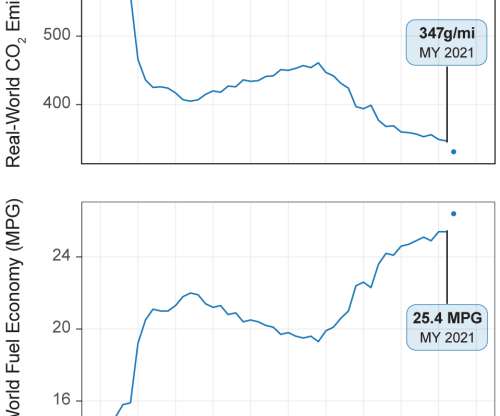EPA trends report finds MY 2021 fuel economy remained flat at a record high while CO2 levels hit new low
Green Car Congress
DECEMBER 13, 2022
Since MY 2004, average fuel economy in the US has increased by 32%, or 6.1 Since MY 2004, CO 2 emissions have decreased 25%, or by 114 g/mi. Overall, advancements in technology are helping industry reach these carbon reduction achievements. Technology share for large manufacturers, MY 2021.


























Let's personalize your content